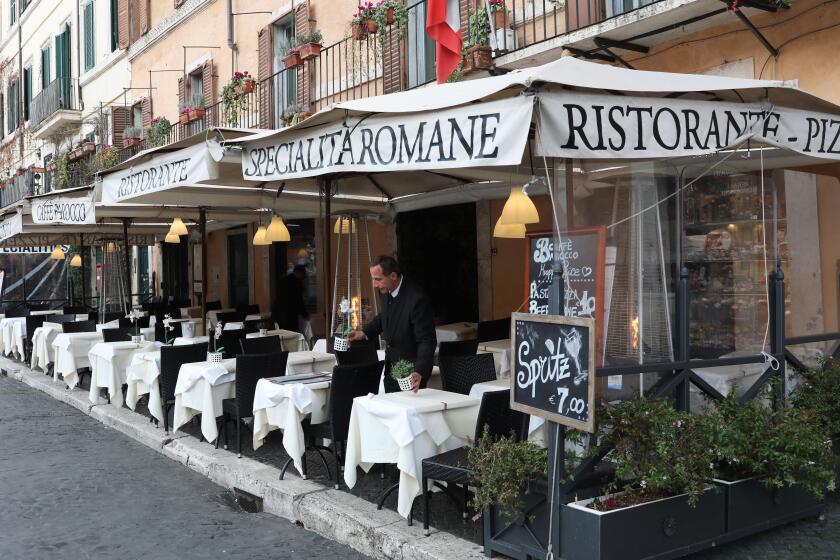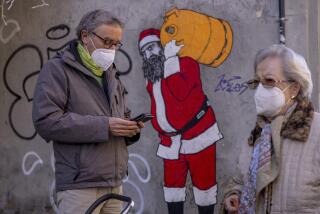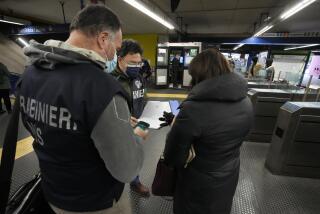Coronavirus quarantine has turned Italy into a beautiful prison
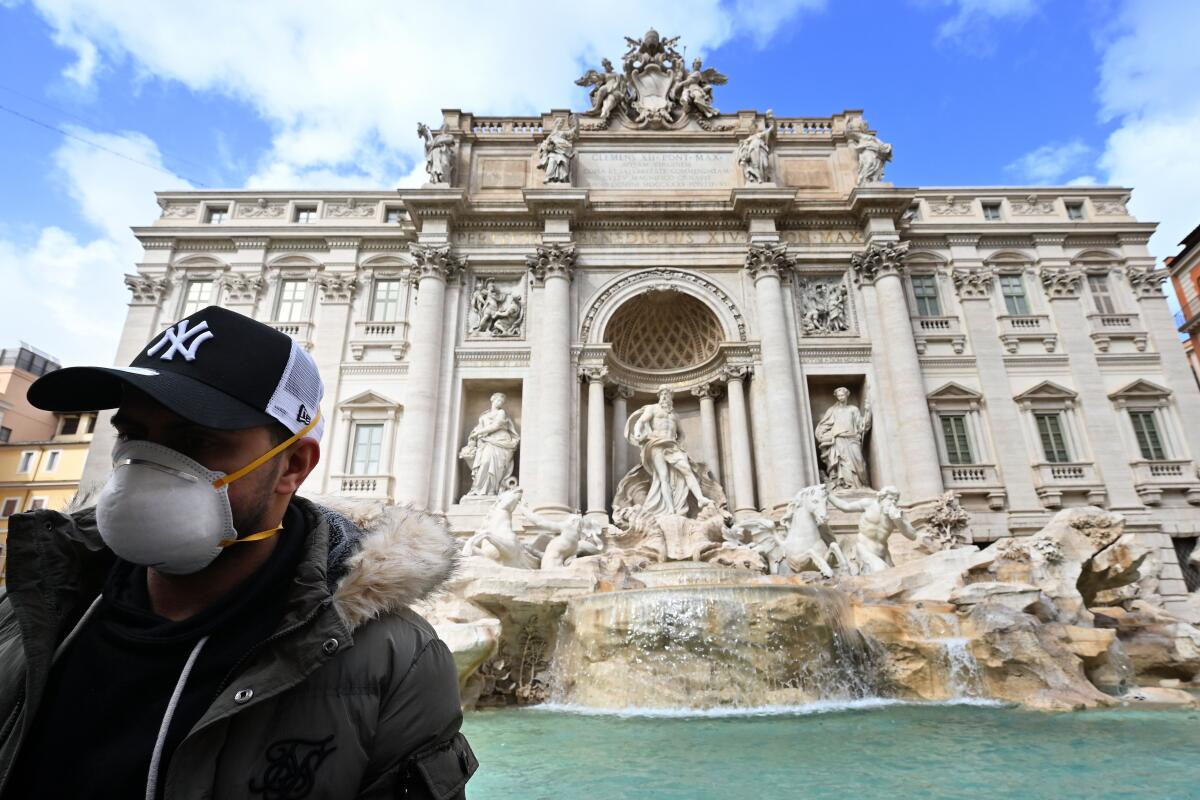
- Share via
ROME — In a cafe in the north of this city, which over the centuries has endured plagues and tyrants, a barista was performing a quite un-Italian task: keeping his espresso drinkers an arm’s length apart to prevent the spread of the coronavirus among a quarantined population of 60 million.
These are strange, deadly and unnerving times in this country, where the brush of a shoulder, the pat of a back or an intimate whisper define the flow of life in piazzas, vestibules and parks shaded by ruins and umbrella pines. And Luigi, the barista at Bar Due Pini, was distressed that the ever-spreading novel virus was altering the natural Italian rhythm.
“The police came by this morning with the order to put down the lines,” said Luigi, noting that the marks on the floor were a yard apart to keep his patrons a safe distance from one another. “We have only seen a few customers today but in two days I bet they will be back.”
That is not likely. Since Prime Minister Giuseppe Conte ordered unprecedented peacetime travel restrictions on Monday, Italians have been forced to edit their impulses and rearrange their inclinations. The number of coronavirus cases has mushroomed, reaching 10,149 on Tuesday after a daily rise of 977 cases, confirming Italy as the worst-hit country outside Asia. More than 630 Italians have died.
The effects have been startling; a city of clamor has been hushed. St. Peter’s Square and the Trevi Fountain have been closed to pilgrims and visitors. Rome feels as if an unexpected vigil has suddenly descended. Barricades have gone up. Alleys are empty of the whine of motorini, the snapping banners of tour guides have fallen silent. Traffic along the Tiber is as light as an errant snowfall.
One woman described it on Facebook as a beautiful prison.
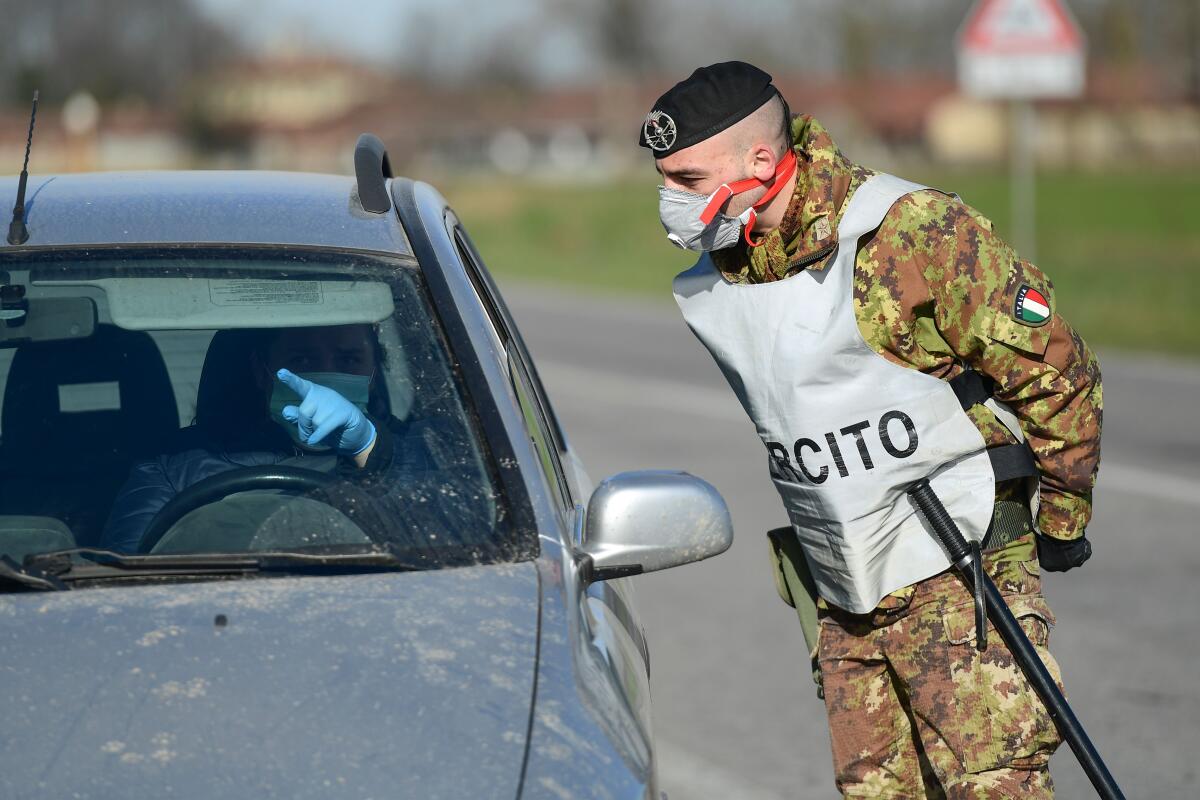
The same is true in Milan, the nation’s northern economic engine and the epicenter of the virus outbreak. The Lombardy region, as it is known, accounts for more than half of Italy’s 10,000 infection cases and most of its 877 intensive care cases. It was the first to close schools, gyms, churches, museums and soccer pitches. Residents can leave the house only for work, health reasons or “other necessities” such as buying groceries or getting exercise.
“This virus doesn’t stop,” Attilio Fontana, president of the Lombardy region, said during a televised news conference. “The only way to beat the virus is to stop its spread.” He called on Italians to stop going to cafes, saying, “It can’t be considered a limitation on our freedom, but a necessity for public health.”
Many are abiding by those warnings, recognizing the danger of a mysterious illness that has spread and killed quickly. But there’s talk and scheming among others about how to sneak past the Carabinieri and get around the new restrictions, which will be in place nationwide until April 3. Italians — by nature, design and experience — look for the hole in the loop, the fine tear in the fabric.
“Italians just don’t like to follow rules,” said Anna Kraczyna, 52, an Italian professor of language and culture based in Florence. “It’s like it’s embedded in our DNA because we’ve had to obey so many rules throughout the centuries.”
Italians lived under some form of occupation from the fall of the Roman Empire until the country’s unification in 1861, Kraczyna said. A trait called “furbizia,” a type of cleverness and subtle enjoyment derived from breaking the rules, developed as a survival mechanism against the country’s many occupiers.
Simona Romanò, a 28-year-old cafe owner, noticed that some stores were still open and people still out: “All day I’ve been seeing people on public transportation going who knows where,” she said, looking out the window onto a major shopping street near the Duomo. Dozens of people, many wearing masks, were walking around even as the 6 p.m. closing time approached.
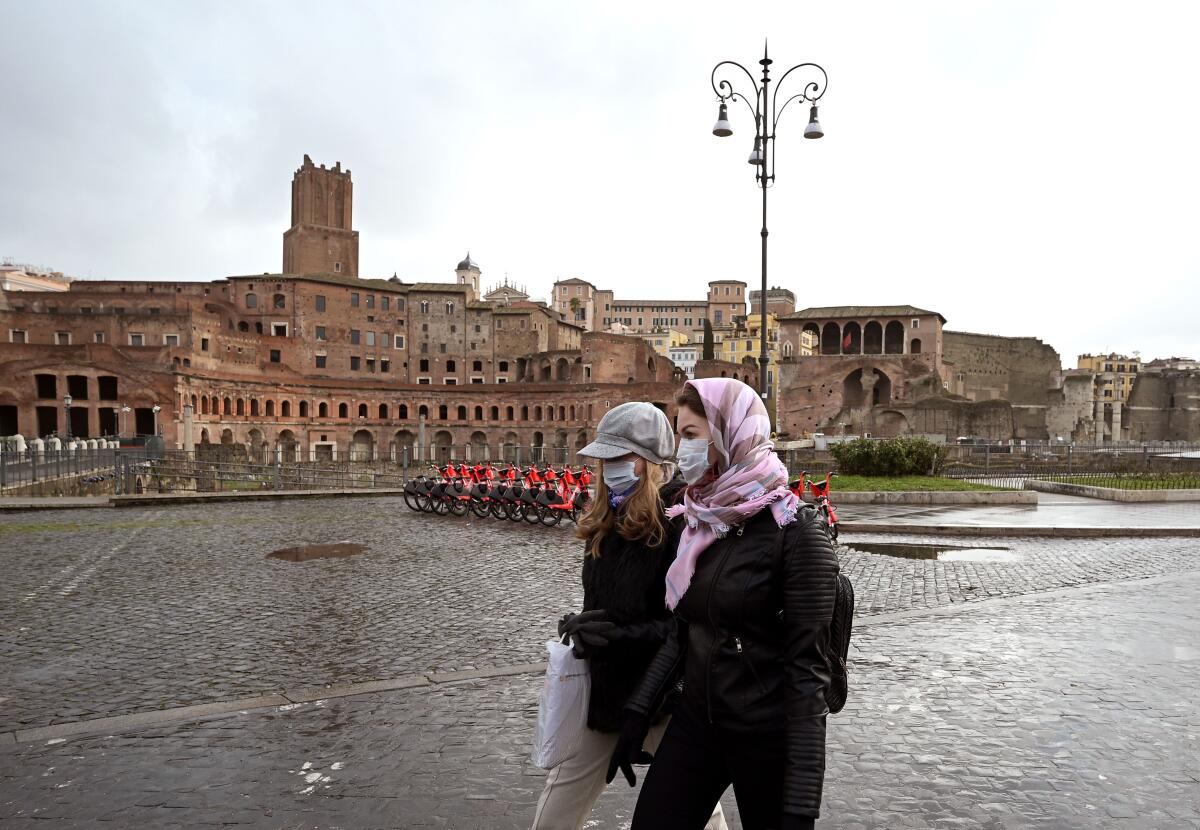
After videos emerged of students drinking in piazzas despite the pubs being closed, the government launched a social media campaign called #iorestoacasa, or #i’mstayinghome, with Italian celebrities trying to persuade young people to rein themselves in.
“Young people think that being immune from the virus they don’t need to stay home, but they don’t realize they can be vectors,” said a source with the Health Ministry. “Now we’re asking artists, musicians, influencers, athletes to say, ‘You need to stay home.’”
Thousands of southern Italians working in the north rushed home over the weekend to avoid being stuck by the quarantine. They were criticized by Giovanni Rezza, an official at Italy’s national health institute, who called them “biological bombs.” At the same time, hospital beds were filling up in Lombardy with virus cases while patients with other serious conditions such as strokes were being evacuated to other regions. Some doctors wonder if that strategy is wise.
“If we take in a weak 80-year-old and maybe keep them alive for two weeks, it is possible they will then die and we will not have treated many other people who had a much higher chance of surviving,” Dr. Marco Vergano, an anesthetist at Turin’s San Giovanni Bosco hospital, told the daily La Stampa.
As the virus spreads south, residents in Rome were donning masks and lining up outside supermarkets as staff let in a few at a time to minimize contact. The shoppers were asked to line up a yard apart from one another. There was no escape from such predicaments: The government has banned open-air assemblies and sporting events while closing swimming pools, spas, ski resorts, museums, cinemas and theaters and barring church funerals.
More than 12,000 people have been infected in Italy. Containment measures that seemed unusually strict two weeks ago turned out to be not strict enough.
Italians must fill in a form to show to police if they wish to leave their town, but despite being encouraged to stay at home, they are still allowed to go to work. To lessen the economic blow — reports suggest Italy may dip into a recession — of company and shop closures, the government said it was considering suspending mortgage payments for families and small firms.
Across Rome, parents who were able to work from home were sharing bandwidth with children participating in videoconference lessons with their schoolteachers. After suspending Masses across the country, the Roman Catholic Church continued to respond to the crisis this week as the Vatican ordered the closure of St. Peter’s Square and St. Peter’s Basilica.
The government told tourists it was time to go. But many couldn’t find flights as airlines canceled connections to Italy.
Special correspondents Kington and Brancolini reported from Rome and Milan, respectively.
More to Read
Sign up for Essential California
The most important California stories and recommendations in your inbox every morning.
You may occasionally receive promotional content from the Los Angeles Times.
